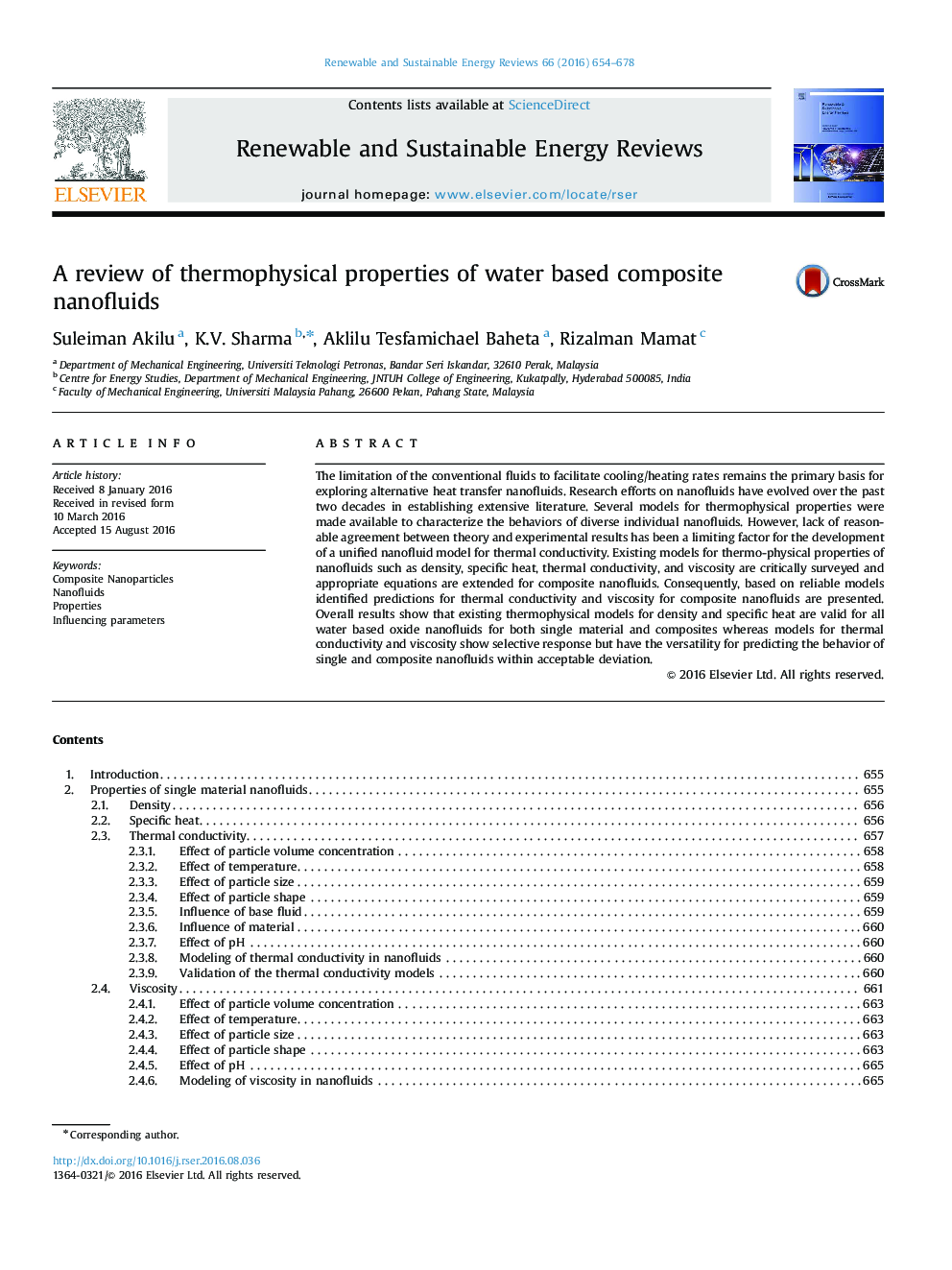| Article ID | Journal | Published Year | Pages | File Type |
|---|---|---|---|---|
| 8112775 | Renewable and Sustainable Energy Reviews | 2016 | 25 Pages |
Abstract
The limitation of the conventional fluids to facilitate cooling/heating rates remains the primary basis for exploring alternative heat transfer nanofluids. Research efforts on nanofluids have evolved over the past two decades in establishing extensive literature. Several models for thermophysical properties were made available to characterize the behaviors of diverse individual nanofluids. However, lack of reasonable agreement between theory and experimental results has been a limiting factor for the development of a unified nanofluid model for thermal conductivity. Existing models for thermo-physical properties of nanofluids such as density, specific heat, thermal conductivity, and viscosity are critically surveyed and appropriate equations are extended for composite nanofluids. Consequently, based on reliable models identified predictions for thermal conductivity and viscosity for composite nanofluids are presented. Overall results show that existing thermophysical models for density and specific heat are valid for all water based oxide nanofluids for both single material and composites whereas models for thermal conductivity and viscosity show selective response but have the versatility for predicting the behavior of single and composite nanofluids within acceptable deviation.
Related Topics
Physical Sciences and Engineering
Energy
Renewable Energy, Sustainability and the Environment
Authors
Suleiman Akilu, K.V. Sharma, Aklilu Tesfamichael Baheta, Rizalman Mamat,
